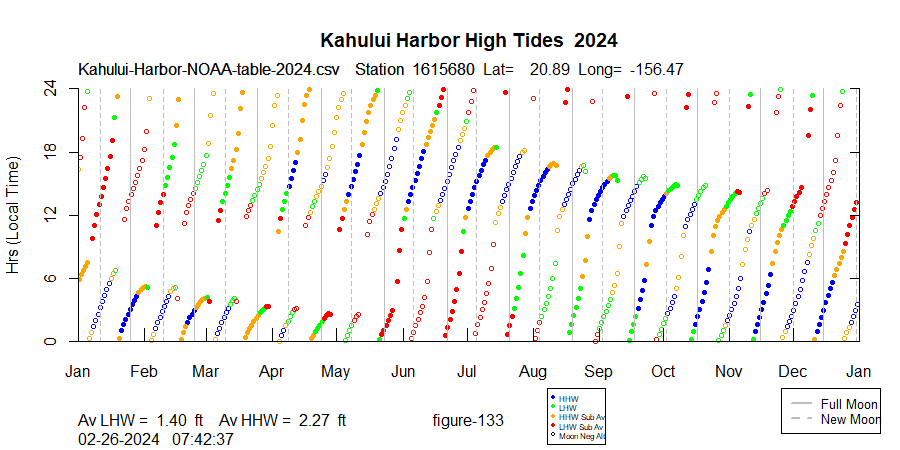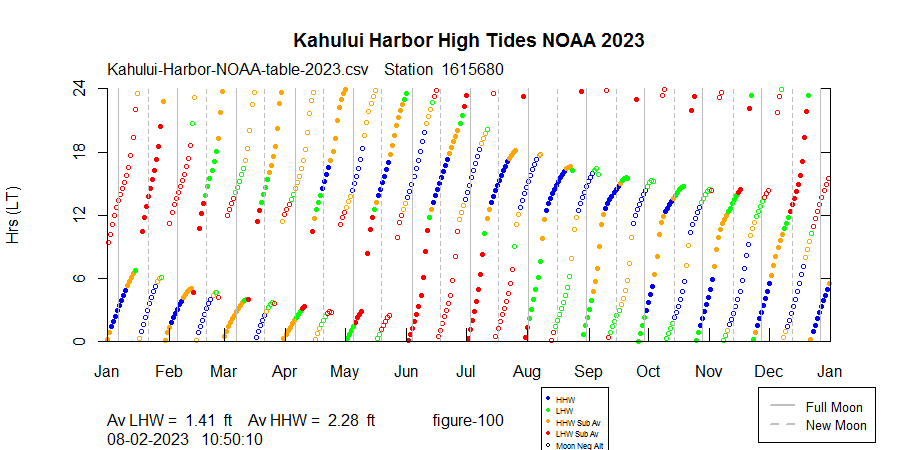Maui Tide Patterns Table of Contents
Why are Maui's high tides so weak during winter days? When are the highest tides? Are new moon high tides stronger than full moon tides? Is the Moon always overhead at high tide? Does the Moon really lift up the ocean to create the tidal bulge? How are the tides predicted? If you've always been curious about the tides, you've come to the right place: Maui's Weak High Tides in Winter Anatomy of a Hole Harmonic Tide Analysis King Tides, New Moons vs Full Moons Does the Moon Lift the Ocean to Create the Tidal Bulge? Tide Lagging and Priming Halifax, Long Island, San Francisco References, Acknowledgements, Contact Info


